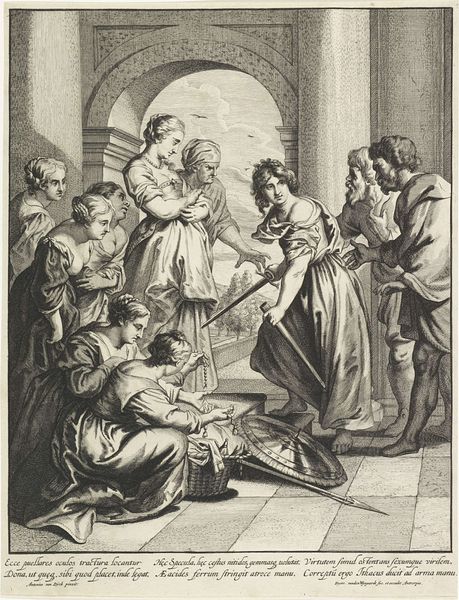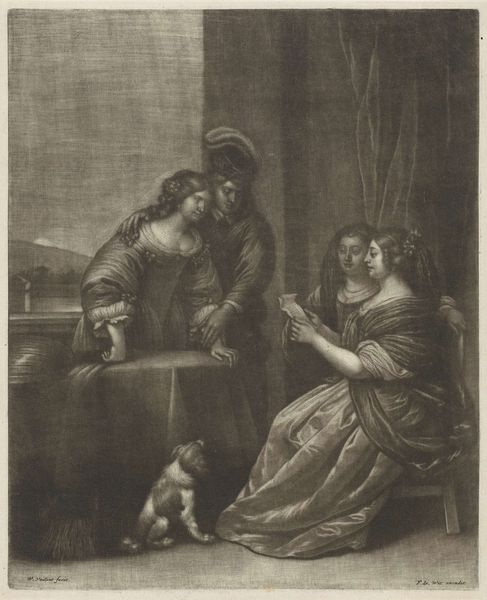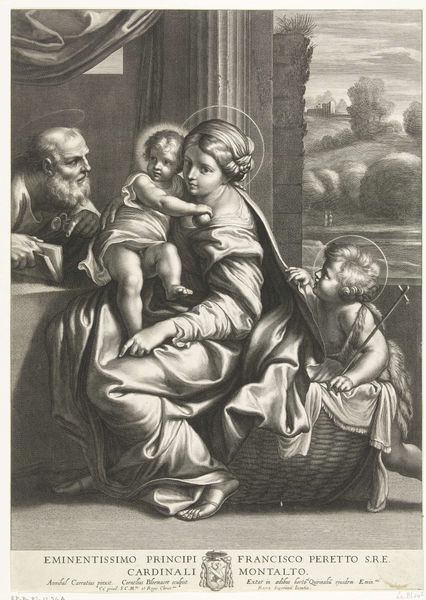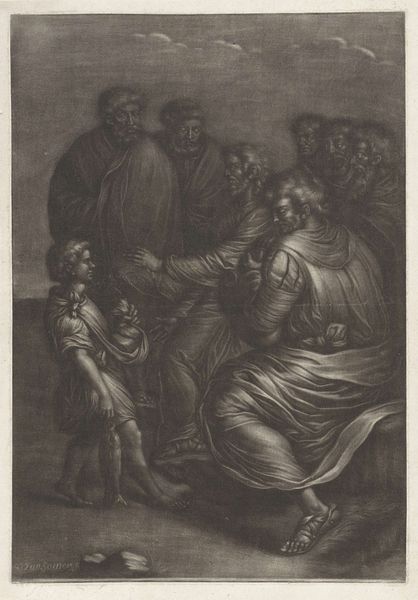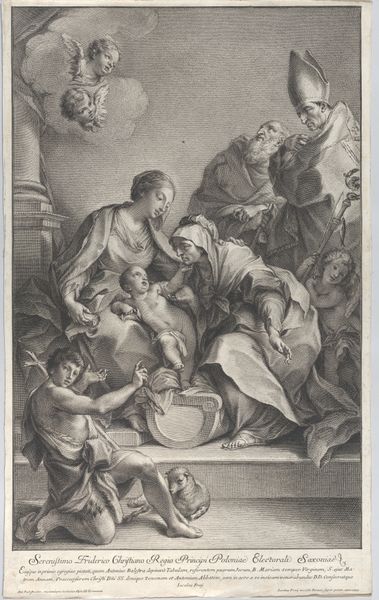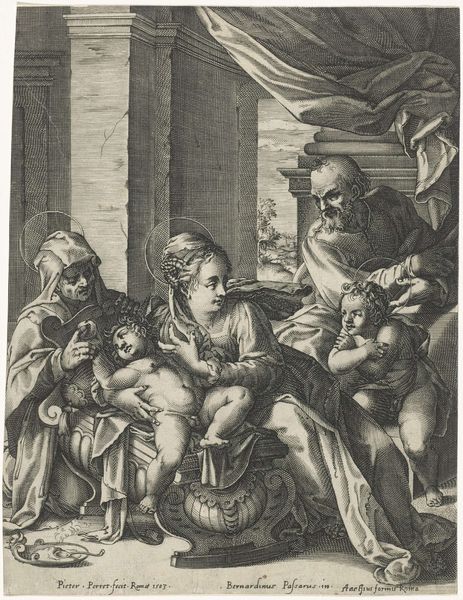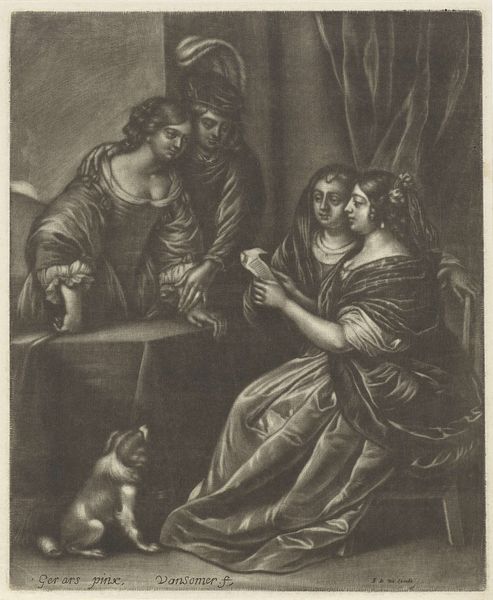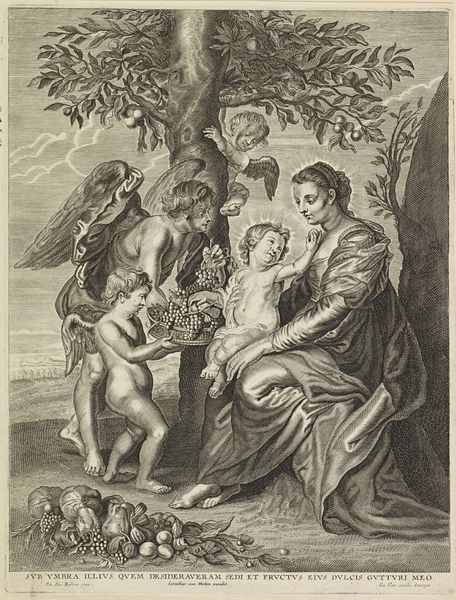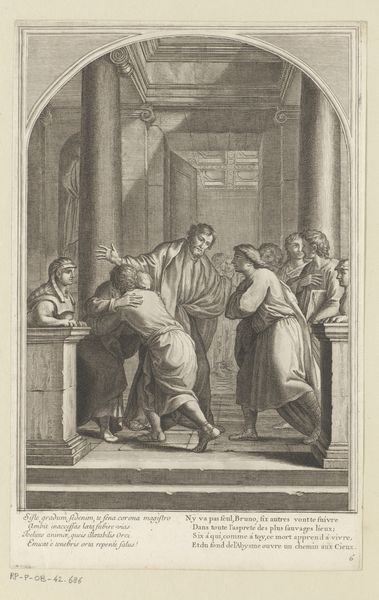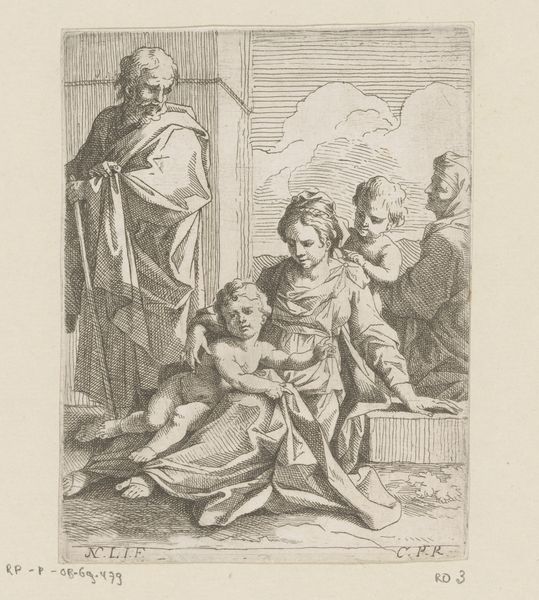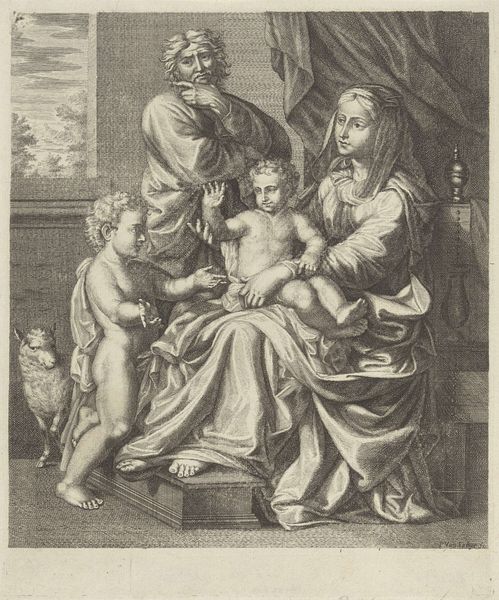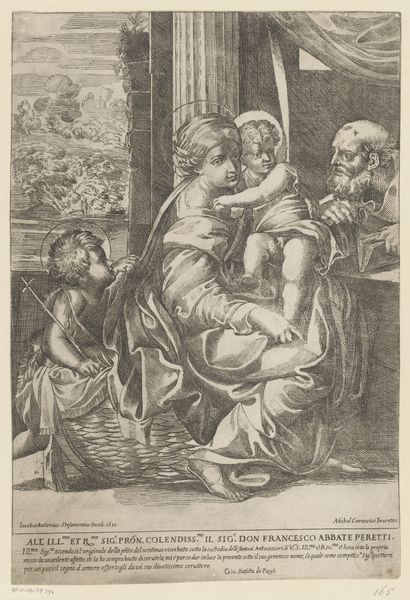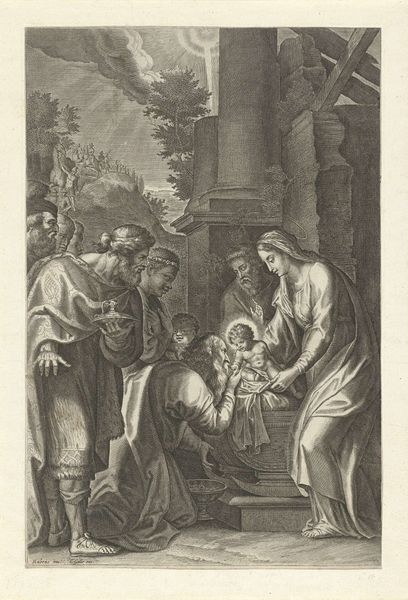
print, engraving
#
portrait
#
pencil drawn
#
baroque
# print
#
charcoal drawing
#
figuration
#
charcoal art
#
pencil drawing
#
history-painting
#
graphite
#
engraving
Dimensions: height 370 mm, width 287 mm
Copyright: Rijks Museum: Open Domain
Curator: Right, let’s turn our attention to “The Holy Family with Saint John the Baptist,” a print made sometime between 1658 and 1677, attributed to Wallerant Vaillant. It’s here in the Rijksmuseum. Editor: My goodness, the textures he creates are unbelievable. It almost glows from within despite being rendered in, presumably, engraving or charcoal! I mean, look at the luminosity of the Christ Child against the muted landscape in the background. Curator: Exactly! Vaillant was a master of mezzotint, a printmaking technique that allows for such subtle gradations of tone. This wasn't about mass production. It was labor, real labor, scraping away at a metal plate to catch the light. Each impression represents hours of highly skilled craftsmanship. Editor: You can sense that labour, almost feel it. It is strange to think of how we can reduce such complex theological questions to marks on paper made through mechanical reproduction—the sacred rendered by material practice. I see a lot of swirling forms with very precise geometry within the drapes of Mary, who feels, simultaneously, like a goddess and, in the best of Baroque tradition, like an ordinary mother, watching us intently. Curator: There's this push and pull, right? He wants to elevate the scene, make it monumental – look at the classical architecture receding in the upper corner, Joseph’s solemn countenance, almost like a philosopher—yet the work is rendered so tenderly, especially the faces, full of personality and life. Editor: How interesting that the cross has been given to Saint John. If this weren’t such an important religious topic, it could simply be interpreted as family dynamics: A proud Joseph in the corner and children competing for each other’s attention. Curator: Or is the cross almost a…toy? Wallerant isn’t shying away from suggesting an intermixing between the sacred and mundane aspects of the home. Editor: A provocative statement. He’s encouraging the audience to consider faith as intrinsic to quotidian experience. Curator: A lasting point that Wallerant has engraved—quite literally—on our consciousnesses today. Editor: A reminder that even in our digitally-saturated present, there is so much to observe by revisiting traditional works.
Comments
No comments
Be the first to comment and join the conversation on the ultimate creative platform.

